The Wii3D Project User Study
Results
Preliminary Observations
There were several issues that were observed during the experiment:
- Confusion between rotation and zoom gestures
- People are more used to mouse and keyboard
- Hidden Markov Models not performing efficiently
- Hidden Markov Models only successfully recognizing a circle gesture 50% of the time
Study's Principal Results
The tests measure the significance of differences in proportions between the two methods of input with levels of significance set at 5%. All of the participants of this user study stated that they would not use the Wii3D System as the primary input device for a computer. There were several primary reasons given for these negative responses:
- Lack of typing support
- Gestures are not always recognized
- Accuracy of the Wii3D System pointers was not as good as a mouse
- Results

The majority of the participants stated that they thought that the Wii3D System would be useful to someone else, or that there were specific tasks for which the Wii3D System would be useful:
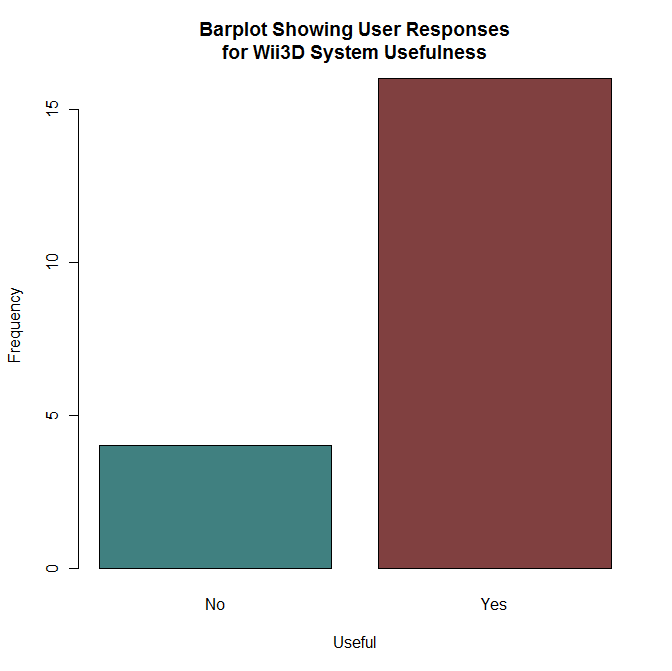
Movement
The participants find the single pointer movement more intuitive when using the mouse than when using the Wii3D System, little difference with two pointers and find the Wii3D System more intuitive with four pointer movement.
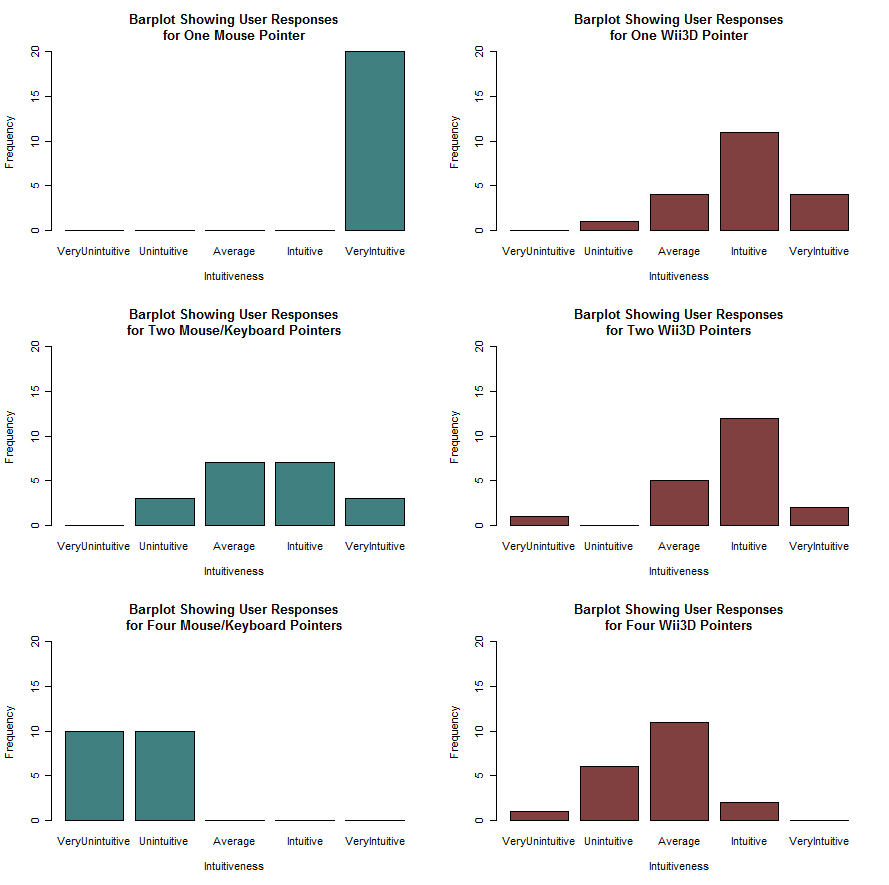
Clicking
A single click was more intuitive with a mouse than with the Wii3D System, and little difference was observed with two clicks.
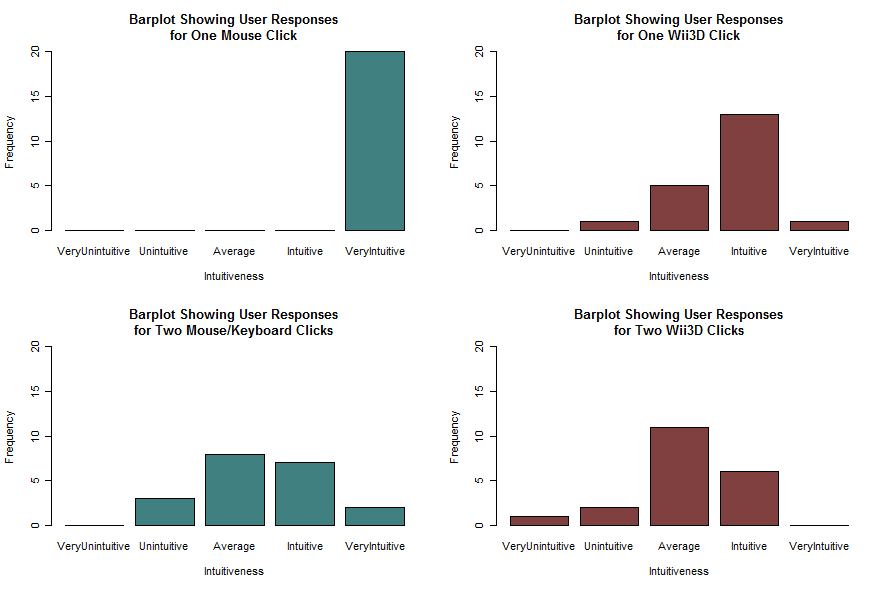
Panning
The panning and scrolling preferred method was the mouse. The Wii3D results, however, were still positive as the majority of the responses rated average or above.

Zooming
The participants found this gesture the most intuitive out of all of the gestures. There was no significant difference between the mouse technique and the Wii3D System method, and all of the Wii3D responses were average and above.

Rotating
The feedback from the participants for the rotation tasks suggest that the mouse input method is slightly more intuitive than the Wii3D System rotation gestures in two dimensions, but insignificantly different in three dimensions. This could be attributed to several participants' rotational gestures being recognized as zoom gestures instead.
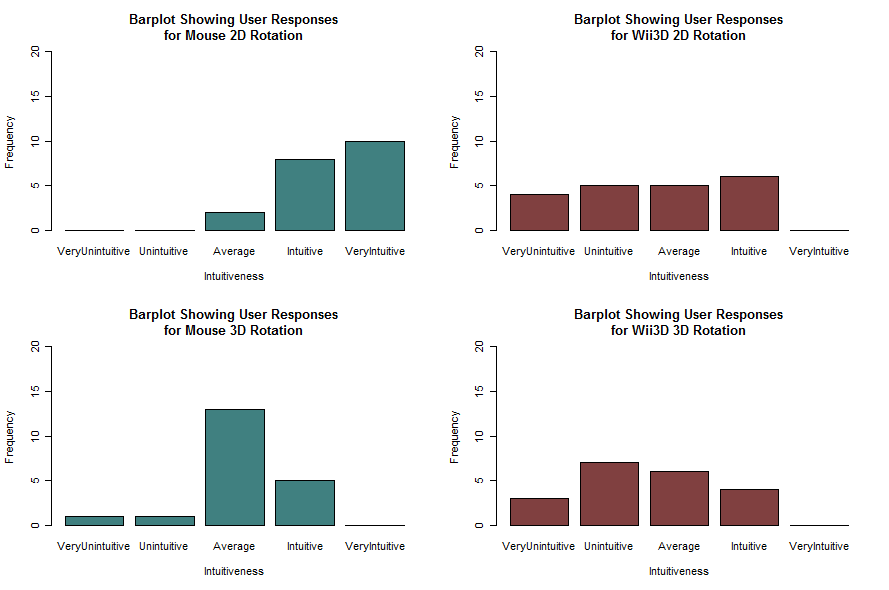
Circle
The graph below appears to show a very discouraging result - the users found that the complex gestures are unintuitive. Unfortunately, the circle gestures were recognized using Hidden Markov Models, and the gesture was correctly identified from the model 50% of the time. This result is reflected in the ten participants who rated this task as "Very Unintuitive". If these results were removed, the results would show that the technique is more intuitive than the graph suggests.
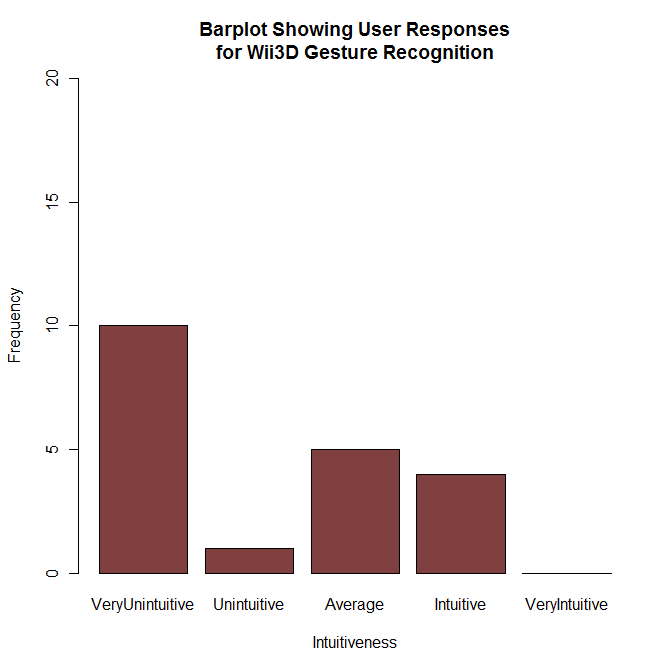
Discussion
The general user position was that the Wii3D System would not work as a replacement for the standard mouse and keyboard. One of the participants wrote, "It's a really nice program that I could get used to! How would I type letters if I had to replace my keyboard?", and another user went so far as to comment, "This system might as well be a gimmick that will be marketed for gaming consoles and will go out of fashion".
The majority of the participants felt that the Wii3D System would be useful for some applications - one of the users said, "Wii3D would work well if some two handed gestures were made for driving games. Holding your hands up and moving them to steer the car and changing gears would be fun".
The implemented point tracker was found to fail in some situations. In extreme circumstances, such as when two infra-red sources merge into one, and one of them then leaves the field of view without being detected, the tracker can be fooled into detecting multiple points when there should only be one.
The participants' feedback yielded two main areas that required attention:
- The users thought that the Wii3D System would be more useful for gaming and other three dimensional interactions
- The users want typing functionality
